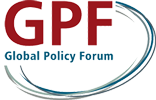
The rising debt burden of developing countries and the lack of adevelopment-oriented debt architecture are impairing their ability to provide essential services in health, education, and social protection, thereby jeopardizing basic human rights. FfD4 has strongly focused on addressing debt issues and has introduced measures to better respond to the needs of countries.
The creditor-oriented international debt resolution architecture has been identified as one important element to be reformed to overcome and better manage future debt crisis situations. Inclusive, multilateral solutions are more necessary than ever to solve the international debt crisis and to enable countries to reach sustainable development. Given the current global economic environment and the global debt situation, the global debt architecture was one of the central – and most controversial – issues in the run-up to Seville.
With this high-level discussion, we aim to explore the following questions from the presenting perspectives of governments, civil society, the labour movement, academia and the UN system:
- What role will FfD4 play in moving beyond a piecemeal approach to an inclusive, development-oriented sovereign debt architecture? Where are entry points, where are obstacles?
- What can be learned from past processes of debt architecture reform to make this time a real difference?
- What follow-ups can and must take place in order to build on and implement agreed objectives? What coalitions are needed?

